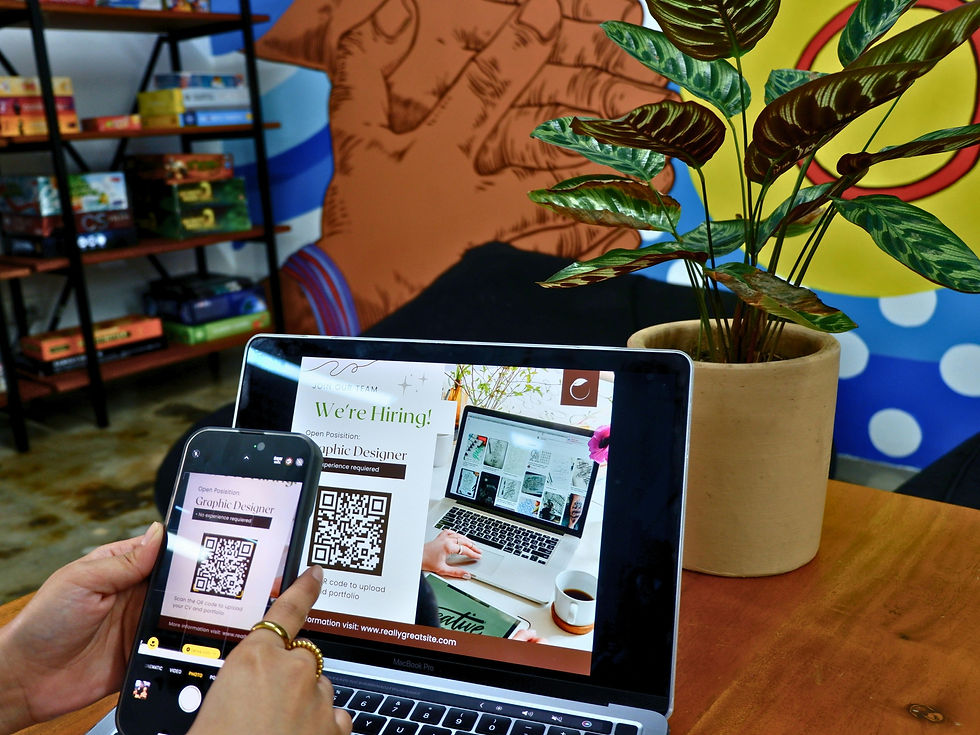Unlocking the Power of QR Codes: Tips for Safe and Effective Usage
- Dr. Nina Mack-Cain

- May 14
- 3 min read

In a world where convenience is key, QR codes have become ubiquitous, making tasks like accessing websites, making payments, and sharing information faster and more efficient. But just how safe are they to use? And when should you consider using QR codes? Let's dive into the world of QR codes to understand their benefits, risks, and best practices.
1. What Are QR Codes?
QR codes, short for Quick Response codes, are two-dimensional barcodes that contain data that can be scanned with a smartphone or a QR code reader. They can store various types of information, such as website URLs, contact details, payment information, and more. With a simple scan, users can access the embedded data instantly.
2. When to Use QR Codes
a. Contactless Payments
QR codes have revolutionized how we make payments, especially in a contactless world. Many businesses now accept payments via QR codes, providing a seamless and secure transaction process.
b. Marketing and Advertising
QR codes have become a significant part of marketing campaigns. By incorporating QR codes in print ads, product packaging, or promotional materials, businesses can drive website traffic, offer discounts, or provide additional product information.
c. Sharing Contact Information
Instead of exchanging business cards, QR codes can instantly share contact details. This eliminates the need for manual data entry and makes networking more efficient.
d. Event Management
QR codes simplify event management processes by enabling attendees to check in, access event details, and receive notifications seamlessly. Organizers can streamline registration and enhance the overall event experience.
e. Accessing Wi-Fi Networks
QR codes can easily share Wi-Fi network credentials with guests or customers. This eliminates the hassle of typing in complex passwords and enhances user experience.
3. Is It Safe to Use QR Codes?
While QR codes offer numerous benefits, they are not without risks. Here are some safety tips to keep in mind when using QR codes:
a. Verify the Source
Before scanning a QR code, ensure it is from a trusted source. Scanning malicious QR codes can lead to malware installation or phishing attacks.
b. Check the URL
Be cautious when scanning QR codes that redirect to URLs. Verify the destination URL before proceeding to ensure it is secure and legitimate.
c. Use a Secure QR Code Reader
Opt for a reputable QR code reader app that prioritizes user privacy and security. Avoid using unknown or third-party QR code scanners.
d. Beware of Fraudulent QR Codes
Exercise caution when scanning QR codes in public spaces. Fraudsters may tamper with legitimate QR codes to redirect users to malicious websites or compromise their devices.
Conclusion
In conclusion, QR codes are powerful tools that offer convenience and efficiency in daily life. Users can leverage their benefits while minimizing potential risks by understanding when to use QR codes and following best practices for safe scanning. So, go ahead and scan that QR code, but do so with caution and awareness!
Remember, convenience should never compromise security when it comes to QR codes.
With these tips, you're now equipped to make the most of QR codes while keeping your data safe and secure. Happy scanning!
Let's Embrace the QR Code Revolution Safely!

Remember to subscribe to our site to stay updated with industry news, blogs, and more about what we do here at Info eNConnect Consulting.








Comments